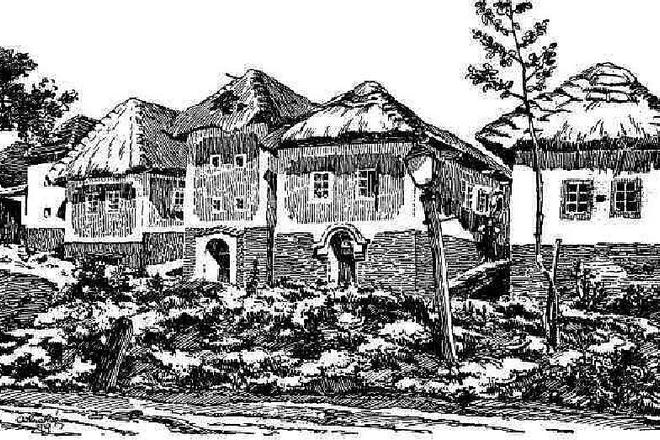CZECH painter Aleš Krátký made a whole series of interesting works around 1920 in which he depicted the period image of Slovak towns and villages. Many of them were also issued as postcards. In the Myjava region, Krátký painted a peculiar but typical town – Brezová pod Bradlom.
A complex of old houses that flanked the streets of Brezová at that time can be seen in this postcard from 1919. Houses had been constructed in the traditional style, covered with thatched roofs, which were considered antiquated by the first decades of the 20th century. One can actually find several archaic elements here in addition to the thatched roofs: the four-slope hip form and the typical door opening reinforced by an embossed portal. It can be seen on the two houses in the middle.
The door opening had several names. The most well-known is probably výpustok, or “outlet” but sometimes it was also called žebračka, “the beggar woman” – as many churches had entrances in a similar shape and beggars used to stand there and ask for alms.
Houses with similar entries were also erected in nearby regions of Hungary, Austria and Moravia. They differed only slightly. People in western Slovakia, for example, used to paint theirs with ornaments. One should also notice the lamp placed on a crooked wooden pole.


